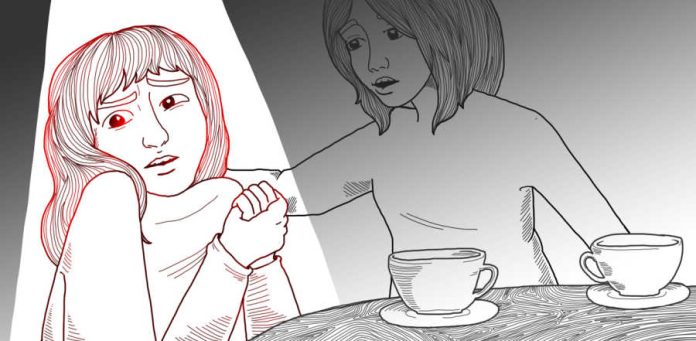Panic attacks can be a terrifying and overwhelming experience for anyone who has ever had one. While it may be difficult to witness someone going through a panic attack, knowing how to help can make a world of difference. In this article, we will discuss some practical ways to support someone having a panic attack.
What is a Panic Attack?
A panic attack is a sudden and intense surge of fear or anxiety that can occur without any apparent trigger. It typically lasts for a few minutes but can feel like an eternity. Common symptoms of a panic attack include:
- Rapid heartbeat
- Sweating
- Shortness of breath
- Shaking or trembling
- Nausea or stomach upset
- Dizziness or lightheadedness
- Chest pain or discomfort
- Fear of losing control or going crazy
Headings
- Recognize the Signs of a Panic Attack
- Stay Calm and Reassuring
- Help Them Focus on Breathing
- Create a Calming Environment
- Offer Distractions and Grounding Techniques
- Encourage Them to Seek Professional Help
Subheadings:
Recognize the Signs of a Panic Attack
- Physical Symptoms
- Emotional Symptoms
Stay Calm and Reassuring
- Keep a Calm Demeanor
- Use Reassuring Language
Help Them Focus on Breathing
- Use Breathing Techniques
- Counting Techniques
Create a Calming Environment
- Find a Quiet Space
- Control the Lighting
- Minimize Stimulation
Offer Distractions and Grounding Techniques
- Engage in Small Talk
- Encourage Them to Name Their Surroundings
- Offer Sensory Distractions
Encourage Them to Seek Professional Help
- Suggest Seeing a Therapist
- Offer to Help Find Resources
- Normalize Seeking Help
Bullet Points:
Recognize the Signs of a Panic Attack:
- Racing heart
- Shortness of breath
- Sweating
- Shaking
- Chest pain or discomfort
- Fear of losing control
Stay Calm and Reassuring:
- Speak in a soothing tone
- Use calm body language
- Express empathy and understanding
Help Them Focus on Breathing:
- Inhale for four seconds
- Hold for four seconds
- Exhale for four seconds
- Repeat for several minutes
Create a Calming Environment:
- Dim the lights
- Remove any triggers
- Play calming music
Offer Distractions and Grounding Techniques:
- Engage in small talk
- Encourage them to name objects in the room
- Offer sensory objects like a stress ball
Encourage Them to Seek Professional Help:
- Normalize therapy
- Offer to help find a therapist
- Encourage self-care
Conclusion
Panic attacks can be a very frightening experience for those who suffer from them. It is important to remember that they are a normal response to stress and can be managed with the right coping skills.
It is also important to be supportive of someone who is having a panic attack and to provide reassurance that they can get through it. If the symptoms of the panic attack last for more than 10 minutes, it may be necessary to seek professional help.
FAQs
Q: What should I do if someone is having a panic attack?
A: Remain calm, provide reassurance, and focus on helping the person to return to a relaxed state. Speak in a calm and reassuring voice and encourage them to take slow, deep breaths. Let them know that the panic attack will pass and that they can get through it.
Q: What are some effective coping strategies for managing panic attacks?
A: Deep breathing, mindfulness meditation, cognitive-behavioral therapy, and positive self-talk are all effective strategies for managing panic attacks. It is also important to identify and address the root cause of the panic attack, such as stress, and to practice relaxation techniques on a daily basis.
Q: What should I do if the symptoms of the panic attack last for more than 10 minutes?
A: If the symptoms of the panic attack last for more than 10 minutes, it is important to seek professional help as soon as possible. A doctor or mental health professional can provide further assistance and support.
Khalid Irfan is a Fitness expert who enjoys spending time in gym. He also enjoys being in the outdoors and exploring new opportunities whenever they arise as well as researching new topics to expand his horizons.

